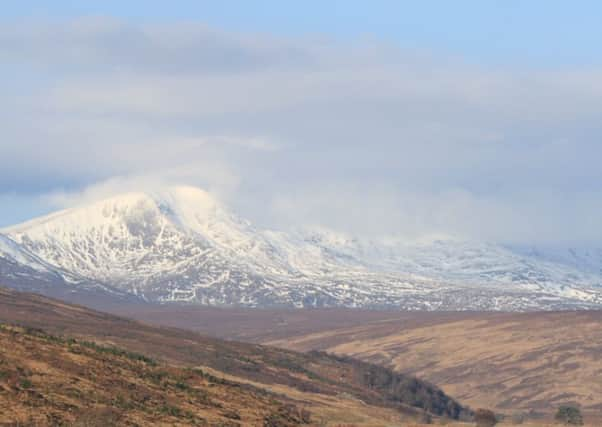Kirsty Gunn: Beauty of calf in snow, horror of vacuum-packed '˜baby'


But in reality, in the being-in-it and walking-through-it sense of the word, it was just perfect. There was the odd day of high wind and a kind of stormy thing happening up in the hills, but in general the days were soft and calm and still with lots of snow that comes and goes, and vivid red and orange sunsets late in the afternoon that heralded a deep navy night crowded with stars.
Who wants to come back to any city after that? I watched my second daughter, who is 16 and therefore impossibly grown-up as far as she and her friends are concerned, standing in the snow, impervious to it actually, in her sweatshirt and trainers, closely watching a little Highland calf that was nestled down in the snow by the fence at the bottom of our garden. Its rough, wonderful coat was bright ginger against all the white, its mother grazing nearby … Katherine was transfixed, as was I.
Advertisement
Hide AdAdvertisement
Hide AdI’d gone down into the basement to do some washing and saw her there – “doing a David Attenborough” as we describe her attentive observation of animals and wildlife – and stopped, watching her watching.
Highland cattle are incredible. Monumental, somehow, with their mighty shaggy heft and bulk, their stillness, their stoicism in all kinds of weather. The little calf curled up in the snow made the landscape at peace with itself, is how it seemed; what the poet and Jesuit priest Gerard Manley Hopkins would have called “inscape” – a sense of the innate patterning of the natural world. It’s a quality that the naturalist, philosopher and Victorian polymath D’Arcy Thompson, of Dundee, also identified in his important book On Growth and Form, that is being celebrated in a new edition put together by the D’Arcy Thompson Zoological Museum curator Mathew Jarron for the scientist’s centenary. “Our greatest need today is to see life as whole, to see its many sides in their proper relations,” Thompson wrote.
So it was with the snow and the calf and the paddock. A teenage girl held back in stillness from the hectic round of adolescence – and my doing the washing. There was a beautiful fit to the whole thing.
The new edition of On Growth and Form is very lovely – and timely, somehow, to be reminded of Thompson’s words, when nature writing has become so popular we might have forgotten why it might be so. It seems there are more books and programmes and newspaper and magazine columns than ever all dedicated to uncovering and celebrating the wonders and mysteries of the natural world.
I think of Robert Macfarlane’s ground-breaking The Wild Places, with its stirring meditations upon the Highlands, published back in 2007, as kicking off the whole movement proper – though Robert would never claim that kind of status and is the first to acknowledge his own influences in all his work. He and Peter Davidson, with Peter’s The Idea of North that came out even earlier, a finely appreciative account of this part of the world with its particular coolnesses and pleasures, are both the most modest and generous of writers. Neither of them would go about banging any kind of a drum – yet their work has generated hundreds of imitators and replications, but more than anything has quite simply changed the way we … see. Those fine still days we’ve been having in Sutherland? “… the feeling was one of recognition,” Davidson writes, about an artist’s first glimpse of northern terrain, “of having entered a region of austere marvels from which there is no easy return.”
That’s it precisely. I don’t ever want to leave that field of snow.
Yet I wonder, too – despite the amount of awareness we now seem to have about the natural world, with our back-to-back series of Blue Planet or any of the other terrific animal and wildlife programmes that give us the creatures of our world in such vivid intimacy – how tuned in we really are. Who of us who saw the David Attenborough episode about pollution and the toxic effects of plastic waste on marine life could forget the image of the whale holding on to her stillborn calf as she traversed the silent miles of the deep, as though unwilling to acknowledge its death.
But TV in all its drama is one thing. What about life as we actually live it? Perceieve it? What about the countryside and the animals at our own back door?
Advertisement
Hide AdAdvertisement
Hide AdMy husband told me about an incident he’d just witnessed at a butcher’s in London that, as he said, “you don’t want to know about”. And it’s true, I am so very glad I wasn’t there.
He was in the shop getting sausages and a woman ahead of him in the queue called out to one of the guys serving: “Do you have my baby for me?” The butcher went out the back and returned, holding out to her, vacuumn packed, a tiny newborn piglet that she would roast later that day. Yes, David said, he was buying meat as well – those sausages of his also came at a price – but something about the image of the tiny, chilled animal, its closed eyes, its perfect, perfect form … he had to get out of the shop. “Suckling pig” he said. “The clue is in the description.”
I set that next to the memory of the calf in the snow as I go about planning a Burns’ Night Supper.
One that will feature, as its centrepiece, a delicious vegetarian haggis from the wonderful MacSween’s.
